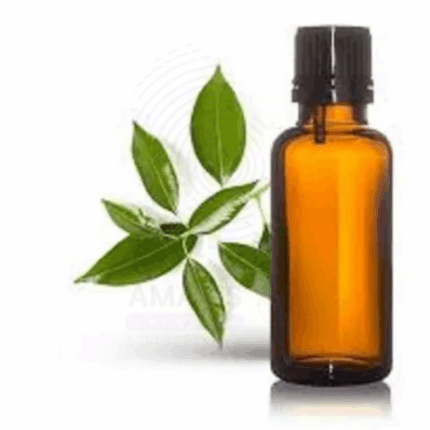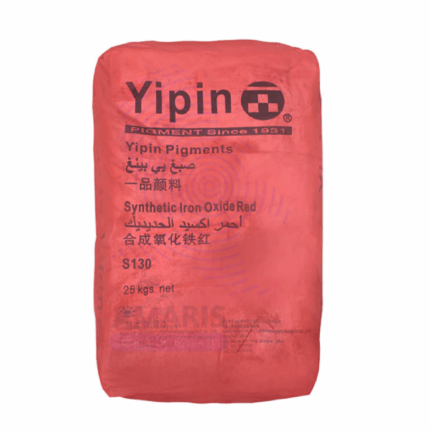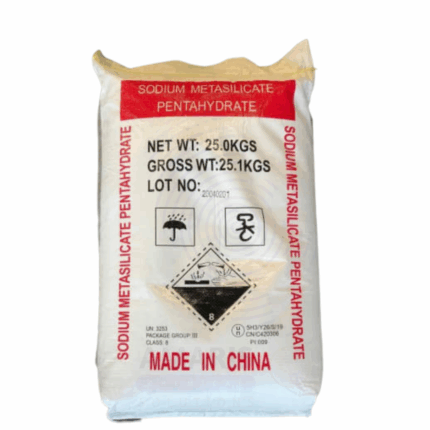
Camphor White Oil
$ 32.26 Original price was: $ 32.26.$ 32.18Current price is: $ 32.18.
Pigment Binder
Whatsapp Order
Product Description
Pigment Binder is a key component in paint, coating, and ink formulations that serves to bind pigment particles together and adhere them to the substrate. It provides mechanical strength, durability, and resistance to environmental factors such as moisture, UV radiation, and chemicals. Pigment binders influence the finish, gloss, flexibility, and adhesion properties of the final product, making them essential for high-performance coatings in various industries.
Description
Table of Contents
Toggle
Uses
Primary Uses
- Paints and Coatings
- Binds pigment particles to form a uniform film on surfaces such as metal, wood, plastic, and concrete.
- Enhances durability and resistance to weathering, abrasion, and corrosion.
- Controls gloss level and finish type (matte, satin, glossy).
- Printing Inks
- Provides adhesion of pigments to substrates including paper, plastics, and textiles.
- Improves print durability, colorfastness, and resistance to smudging.
- Adhesives and Sealants
- Used in pigmented adhesives to ensure uniform color and bonding strength.
- Construction Materials
- Incorporated in colored cement, mortars, and plasters to maintain pigment distribution and structural integrity.
Secondary Uses
- Art Supplies
- Utilized in artist paints, pastels, and inks for improved pigment dispersion and binding.
- Cosmetics
- Acts as a binder in pigmented makeup products such as foundations and eye shadows.
- Textile Printing
- Helps fix pigments on fabric for long-lasting coloration and resistance to washing.
- Plastic Coloring
- Used in masterbatches and plastic compounding to evenly disperse pigments and maintain color stability.
KEY PRODUCT FEATURES
Key Attributes
Basic Identification Attributes
- Chemical Name (IUPAC): Varies by binder type (e.g., acrylic polymers, alkyd resins, polyurethane)
- Common/Trade Name: Pigment Binder
- CAS Number: Varies by formulation
- HS Code: 3209.10 (Paint binders)
- Synonyms: Binder resin; film-forming agent
Physical & Chemical Properties
- Physical State: Liquid or solid (depending on type)
- Color & Odor: Typically colorless or slightly colored; mild odor depending on binder type
- Solubility: Waterborne or solvent-based depending on formulation
- Density: Varies; typically 1.0 – 1.2 g/cm³ (liquid binders)
Safety & Hazard Attributes
- GHS Classification: Varies by chemical composition; often flammable or irritant
- Toxicity: Low to moderate depending on binder type; avoid inhalation and skin contact
- Exposure Limits: Follow safety data sheets for specific products
Storage & Handling Attributes
- Storage Conditions: Store in sealed containers, away from heat and ignition sources
- Container Type: Drums, pails, or bulk containers
- Shelf Life: Typically 6–24 months depending on type and storage conditions
- Handling Precautions: Use gloves and eye protection; avoid inhaling vapors or dust
Regulatory & Compliance Attributes
- Complies with relevant paint and chemical safety standards (e.g., ASTM, REACH)
- May meet VOC regulations for environmental compliance
Environmental & Health Impact
- Biodegradability: Varies by polymer type; some are biodegradable
- Ecotoxicity: Generally low; dependent on binder composition
- Bioaccumulation: Not significant
SAFETY HANDLING PRECAUUTIONS
Safety Handling Precautions
- PPE Required: Gloves, goggles, and protective clothing recommended
- Handling Guidelines: Use in well-ventilated areas; avoid direct contact with skin and eyes
- Storage Measures: Keep containers tightly closed; prevent exposure to ignition sources
First Aid Measures
- Inhalation: Move to fresh air; seek medical attention if breathing difficulties occur
- Skin Contact: Wash with soap and water; seek medical advice if irritation develops
- Eye Contact: Rinse with water for at least 15 minutes; seek medical attention if irritation persists
- Ingestion: Rinse mouth; do not induce vomiting; get medical help
Firefighting Measures
- Fire Hazards: May be flammable depending on binder solvent content
- Extinguishing Media: Foam, dry chemical, CO₂, or water spray
- Special Precautions: Use protective equipment and self-contained breathing apparatus
- Hazardous Combustion Products: Carbon oxides, hydrocarbons
Related products
Reactive Yellow HeR
Reactive Yellow HeR is a high-exhaust, mono-functional reactive dye used predominantly in the textile industry for dyeing and printing cellulosic fibers like cotton, viscose, and their blends. This dye contains a reactive group that forms a covalent bond with hydroxyl groups in cellulose under alkaline conditions, ensuring excellent wash fastness and color retention. Reactive Yellow HeR is valued for its bright yellow hue, good solubility, and compatibility with continuous, semi-continuous, and batch dyeing processes.
Red Oxide S130
Red Oxide S130 is a high-purity synthetic iron oxide pigment that offers a deep red hue with excellent opacity, dispersibility, and weather resistance. It is widely used in the coatings, construction, plastics, rubber, ceramic, and ink industries for its color stability, non-toxicity, and resistance to UV light and chemicals. Red Oxide S130 is finely milled for consistent performance and is suitable for both indoor and outdoor applications. Its chemical inertness and thermal stability make it ideal for demanding environments requiring long-lasting coloration.
Rhodamine B
Rhodamine B is a bright pink to reddish-purple synthetic dye belonging to the xanthene family. It is widely used as a fluorescent tracer dye and coloring agent due to its strong fluorescence and high photostability. Rhodamine B finds applications in analytical chemistry, biological staining, and industrial processes requiring vivid coloration or fluorescence detection.
Silicon Emulsion
Silicon Emulsion is a stable, water-based emulsion of polydimethylsiloxane (PDMS) or other silicone fluids, commonly used for lubrication, gloss enhancement, release, water repellency, and surface conditioning. It appears as a milky-white, viscous liquid and is non-toxic, non-flammable, and easy to handle. Due to its excellent spreadability and low surface tension, it is widely used in industries ranging from automotive and textiles to agriculture, construction, and cosmetics.
Sodium Metasilicate Pentahydrate
Sodium Metasilicate Pentahydrate is a white crystalline solid containing five molecules of water of crystallization. It is widely used for its alkaline and detergent properties, making it effective in cleaning, water treatment, and as a corrosion inhibitor. The pentahydrate form is commonly preferred in detergent and industrial applications where controlled moisture content is beneficial. It dissolves readily in water, forming strongly alkaline solutions useful in various industries.
Sodium Sulphite Blue
Sodium Sulphite Blue is a white to bluish-white crystalline powder with the chemical formula Na₂SO₃. The “Blue” grade indicates a specific industrial quality often containing minor additives or impurities, used primarily in water treatment and chemical industries. It acts as an effective oxygen scavenger, reducing agent, and preservative. This 25kg packaged product is highly soluble in water, forming alkaline solutions, and is widely used in pulp and paper, water treatment, textile, and photographic industries.
Textile Stiffener
Textile Stiffener is a finishing agent formulated to impart stiffness, body, and shape retention to fabrics. It is typically composed of natural or synthetic polymers such as starch derivatives, polyvinyl acetate, acrylic resins, or modified cellulose. Applied during the finishing process, textile stiffeners enhance the handle, drape, and durability of textiles, making them suitable for a wide range of applications from fashion to industrial fabrics.
Turkey Red Oil (Sulphated Castor Oil)
Turkey Red Oil, also known as Sulphated Castor Oil, is a water-soluble derivative of castor oil produced through a sulfonation process using concentrated sulfuric acid. It results in a highly viscous, amber-colored liquid that acts as an excellent emulsifier, wetting agent, and dispersing agent. Unlike natural castor oil, it disperses easily in water, making it ideal for applications in textiles, cosmetics, agriculture, and industrial formulations. Its biodegradable and non-toxic nature also makes it eco-friendly and suitable for sensitive formulations.


 Preservatives(food)
Preservatives(food) Flavor Enhancers
Flavor Enhancers Acidulants
Acidulants Sweeteners
Sweeteners Antioxidants
Antioxidants Colorants(food)
Colorants(food) Nutraceutical Ingredients (food)
Nutraceutical Ingredients (food) Nutrient Supplements
Nutrient Supplements Emulsifiers
Emulsifiers
 Collectors
Collectors Dust Suppressants
Dust Suppressants Explosives and Blasting Agents
Explosives and Blasting Agents Flocculants and Coagulants
Flocculants and Coagulants Frothers
Frothers Leaching Agents
Leaching Agents pH Modifiers
pH Modifiers Precious Metal Extraction Agents
Precious Metal Extraction Agents
 Antioxidants(plastic)
Antioxidants(plastic) Colorants (Pigments, Dyes)
Colorants (Pigments, Dyes) Fillers and Reinforcements
Fillers and Reinforcements Flame Retardants
Flame Retardants Monomers
Monomers Plasticizers
Plasticizers Polymerization Initiators
Polymerization Initiators Stabilizers (UV, Heat)
Stabilizers (UV, Heat)
 Antifoaming Agents
Antifoaming Agents Chelating Agents
Chelating Agents Coagulants and Flocculants
Coagulants and Flocculants Corrosion Inhibitors
Corrosion Inhibitors Disinfectants and Biocides
Disinfectants and Biocides Oxidizing Agents
Oxidizing Agents pH Adjusters
pH Adjusters Scale Inhibitors( water)
Scale Inhibitors( water)
 Antioxidants(cosmetic)
Antioxidants(cosmetic) Emollients
Emollients Fragrances and Essential Oils
Fragrances and Essential Oils Humectants
Humectants Preservatives
Preservatives Surfactants(cosmetic)
Surfactants(cosmetic) Thickeners
Thickeners UV Filters
UV Filters
 Fertilizers
Fertilizers Soil Conditioners
Soil Conditioners Plant Growth Regulators
Plant Growth Regulators Animal Feed Additives
Animal Feed Additives Biostimulants
Biostimulants Pesticides (Herbicides, Insecticides, Fungicides)
Pesticides (Herbicides, Insecticides, Fungicides)
 Active Pharmaceutical Ingredients (APIs)
Active Pharmaceutical Ingredients (APIs) Excipients
Excipients Solvents(pharmaceutical)
Solvents(pharmaceutical) Antibiotics
Antibiotics Antiseptics and Disinfectants
Antiseptics and Disinfectants Vaccine Adjuvants
Vaccine Adjuvants Nutraceutical Ingredients (pharmaceutical)
Nutraceutical Ingredients (pharmaceutical) Analgesics & Antipyretics
Analgesics & Antipyretics
 Analytical Reagents
Analytical Reagents Solvents(lab)
Solvents(lab) Chromatography Chemicals
Chromatography Chemicals Spectroscopy Reagents
Spectroscopy Reagents microbiology-and-cell-culture-reagents
microbiology-and-cell-culture-reagents Molecular Biology Reagents
Molecular Biology Reagents Biochemical Reagents
Biochemical Reagents Inorganic and Organic Standards
Inorganic and Organic Standards Laboratory Safety Chemicals
Laboratory Safety Chemicals Specialty Laboratory Chemicals(Special Laboratory Equipment)
Specialty Laboratory Chemicals(Special Laboratory Equipment)
 Demulsifiers
Demulsifiers Hydraulic Fracturing Fluids
Hydraulic Fracturing Fluids Scale Inhibitors(oil)
Scale Inhibitors(oil) Surfactants(oil)
Surfactants(oil) Drilling Fluids
Drilling Fluids
 Dyes and Pigments
Dyes and Pigments Bleaching Agents
Bleaching Agents Softening Agents
Softening Agents Finishing Agents
Finishing Agents Antistatic Agents
Antistatic Agents
 Admixtures
Admixtures Waterproofing Agents
Waterproofing Agents Sealants and Adhesives
Sealants and Adhesives Curing Compounds
Curing Compounds Concrete Repair Chemicals
Concrete Repair Chemicals Anti-Corrosion Coatings
Anti-Corrosion Coatings
 Surfactants(cleaning)
Surfactants(cleaning) Builders
Builders Enzymes
Enzymes Solvents (Cleaning)
Solvents (Cleaning) Fragrances
Fragrances
 Electronic Chemicals
Electronic Chemicals Catalysts
Catalysts Lubricants
Lubricants Photographic Chemicals
Photographic Chemicals Refrigerants
Refrigerants Automotive chemicals
Automotive chemicals Pyrotechnic Chemicals
Pyrotechnic Chemicals
 Biodegradable Surfactants
Biodegradable Surfactants Bio-based Solvents
Bio-based Solvents Renewable Polymers
Renewable Polymers Carbon Capture Chemicals
Carbon Capture Chemicals Wastewater Treatment Chemicals
Wastewater Treatment Chemicals
 Pigments
Pigments Solvents(paint)
Solvents(paint) Specialty Coatings
Specialty Coatings Binders/Resins
Binders/Resins Additives
Additives Driers
Driers Anti-Corrosion Agents
Anti-Corrosion Agents Functional Coatings
Functional Coatings Application-Specific Coatings
Application-Specific Coatings
 Fresh Herbs
Fresh Herbs Ground Spices
Ground Spices Whole Spices
Whole Spices Spice Blends
Spice Blends Dried Herbs
Dried Herbs
 Leavening Agents
Leavening Agents Dough Conditioners
Dough Conditioners Flour Treatments
Flour Treatments Fat Replacers
Fat Replacers Decoratives
Decoratives Preservatives(baking)
Preservatives(baking)
 Plasticizers & Softeners
Plasticizers & Softeners Reinforcing Agents
Reinforcing Agents Adhesion Promoters
Adhesion Promoters Vulcanizing Agents
Vulcanizing Agents Antidegradants
Antidegradants Blowing Agents
Blowing Agents Fillers & Extenders
Fillers & Extenders Accelerators & Retarders
Accelerators & Retarders




















